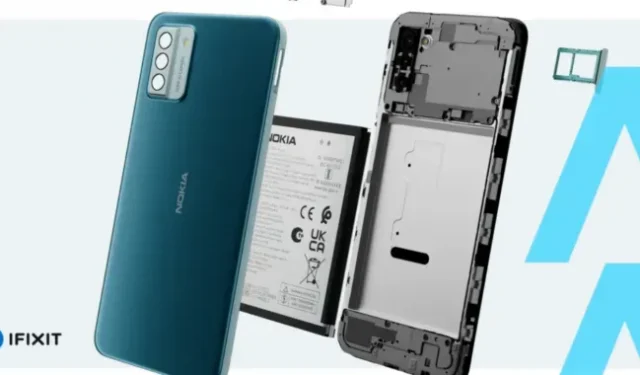Nokia G22 positions the standard budget phone as “repairable”.

HMD and its licensed brand Nokia are banking on a repairable smartphone with the Nokia G22. Like Google and Samsung, HMD has partnered with iFixit to offer official parts and repair guides online. In addition to the partnership, HMD takes it one step further and says, “Starting with the Nokia G22, we will design and manufacture smartphones that are easier to repair.” It’s nice to see the company touting attempts at a more repairable design, but there’s little about the G22 that makes it more repairable than a regular cheap phone.
The phone itself is a $179 (€179) low-cost device with a 6.52-inch 90Hz LCD display with 1200×720 resolution. two cores A55 and ARM Mali-G57 MP1. It has 4GB of RAM, 64GB of internal storage, and a 5050mAh battery with 20W charging. The phone has a side-mounted fingerprint reader, a headphone jack, a microSD slot and, if you get the “TA-1528″model, NFC. The phone comes with Android 12 and has two years of major OS updates and three years of monthly security updates, which is pretty good for a cheap phone. It will go on sale March 8 in the UK for £149.99 ($179), with sales eventually taking place in Europe and Australia as well.
As for half of that iFixit partnership, there are four parts for sale at the parts store: a $53 screen, a $26 battery, a $20 charging port, and a new $26 plastic backplate. There are also the usual high-quality manuals from iFixit that detail all the screws and clips you’ll have to deal with to actually replace those parts, as well as a recommended list of tools.
How is this “repairable”design?
So far so good. Each manufacturer should offer spare parts and instructions for replacing broken parts. As usual, the parts store needs to be more complete and any effort is appreciated. However, HMD went one step further, promising a real-world design that prioritizes repairs. But if you ask, “What deliberate design decisions were made to prioritize renovations?”you won’t get many satisfactory answers.
The G22 is a cheap phone that is not water resistant and has a plastic back. This means it’s not glued and you don’t have to fiddle with heating pads. That’s true of a lot of cheap phones, though: water resistance and a glass back are features that usually get lumps of glue out, and cheap phones usually don’t have to deal with this, so this level of “repairability”is fairly standard on cheap phones. It would be great if a “repairable”phone took on a trade-off between “openability and water resistance”. The method to open the HMD without glue is to insert a guitar pick into the phone’s seams and pry off some plastic tabs. I’d rather see an opening method here that uses a real clasp,
Once inside the phone, you will see a tab for the glued-in battery and nothing else in terms of maintainability. Replacing the screen is one of the most commonly needed repairs, but in the G22, all components are attached to the back of the screen, so replacing the screen means removing each component from the phone to get to the display and bezel combination. iFixit’s official guide lists 39 steps to replace screen, which seems more complicated than it should be, especially for something that is marketed as repairable.
If you look at the teardown of the phone it replaces, the G21, the only change made to the G22 that makes it worthy of a new “repairable”sales pitch is replacing the glued-on back with plastic tabs. The G21 was also not waterproof and didn’t use glue at all. It’s definitely a small step in the right direction, but it seems like a lot more effort has been put into the marketing of maintainability rather than the maintainability of the phone itself. The second main item on the website is “QuickFix maintainability,”a completely fictional camel-body brand, but little to back up that conversation.
In fact, the repair-friendly design will probably look like the iPhone 14. Apple is certainly not a friend to repair with arbitrary software locks., but the phone’s physical design is quite repairable thanks to the central frame that holds all the components. Mounting everything on an internal frame means the front and back panels come off in just two or three steps (unscrew the bottom screws, fight the adhesive, maybe unplug the cable). You can choose which panel to remove first, so for a screen replacement you can remove the front screen and simply replace it. To replace the battery, you can first remove the back cover and replace the battery without touching the rest of the phone. We’d go for a truly repairable design, but HMD’s “repairable”phone seems like a cheap phone with a parts store and a new sales pitch.
Leave a Reply